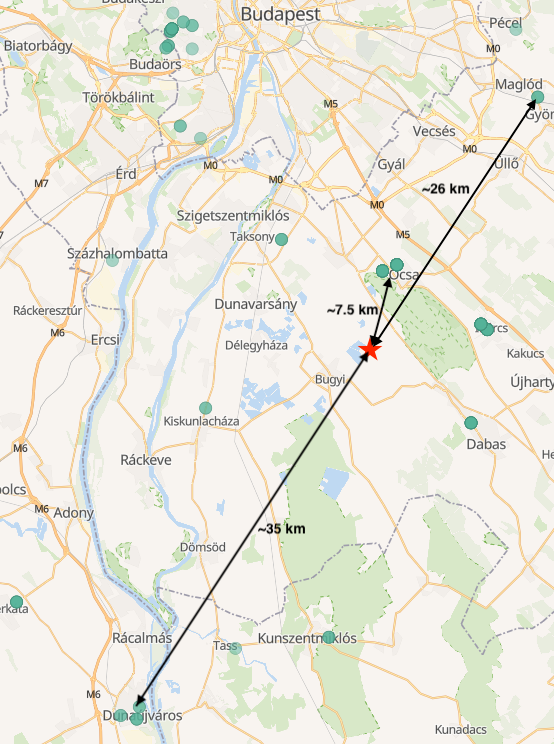The Helium Network is a LoRaWAN (~IoT) network provider — similar to TheThingsNetwork — which incentivize people by giving away its own cryptocurrency for creating network coverage. So far only a handful of us were trying to create LoRaWAN coverage in Hungary. Nowadays hordes of clueless fucks climb their roof to install their €500-1000 “miners” (most of them facing 5+ years of ROI).
The results are awesome. This is one of those rare occasions where stupid people can make a great service for the majority.

Those gateway owners at 10+ km distance of my sensors worked really hard to provide a good coverage, and they surely make money out of it ($80 worth of $HTN in the last 30d). For reference, I installed a TTN-connected gateway ~2 km from the sensors indoors in an office, and the reception is next to non-existent.
Narrowband IoT consequences
An obvious alternative to LoRaWAN is NBIoT. There is the famous €10 for 10 MB for 10 years offer from Deutsche Telekom. On the other hand:
- you have to buy the transceiver module, which is more expensive than a LoRa transceiver
- you need a SIM card, also increasing the BOM cost
- different countries have different carriers (roaming), further complicating life
But the elephant in the room is the coverage. If you work at a location without a NBIoT service, there is no chance in life to persuade the carriers to create one, especially not in a timely manner. You can always install a LoRaWAN/Helium gateway on the other hand.
Given Helium already has a nice base coverage, I dropped my future plans on NBIoT development — for a while at least, to see how things evolve.
Helium is probably not a scam
I initially thought this whole $HTN is a scam:
- the main selling point ($1 per 100k messages) suggest the network not sustainable
- a secret group of people (called oracles) “set” the price in USD
After some research I’m about to change my mind. There is a built-in market dynamics that create a constant demand of $HTN by real users (not miners), namely the purchases of OUIs and DevAddrs.
Each device on the network needs an address from a limited address space. As such, these DevAddr cost money. Today a single address is $100, which must be payed in HNT. Using some tricks in the protocol an address is somewhat shareable among devices, creating an initial cost comparable to Telekom’s offer, about $10 per device. During their lifetime each device generated traffic in the $3-5 range (that’s ~30-50 hours of SF10 transmission, draining a single D26 LiSOCl2 battery). So the lifetime value of a single device is (today) ~$13-15. This is real money exchanged to $HNT.
Let’s suppose there will be 1 smart reader per person in the developed word (think of utility companies), and 15% of these use Helium. That’s ~$2000M real money per billion population. Today’s fully diluted market capitalization of $HNT is exactly $2000M, btw.
As a cautious note, Helium had so far sold 31 OUIs and 2312 DevAddrs. That’s $235k real-life money spent and an other $70k-110k expected in traffic charges (best-case). The market cap of $HNT today is $1B, which is a bit more than the miners spent on their gateways (900k gateways installed at $500-1000 per gateway + installation costs). That’s a 3000x difference: there is room for improvement.